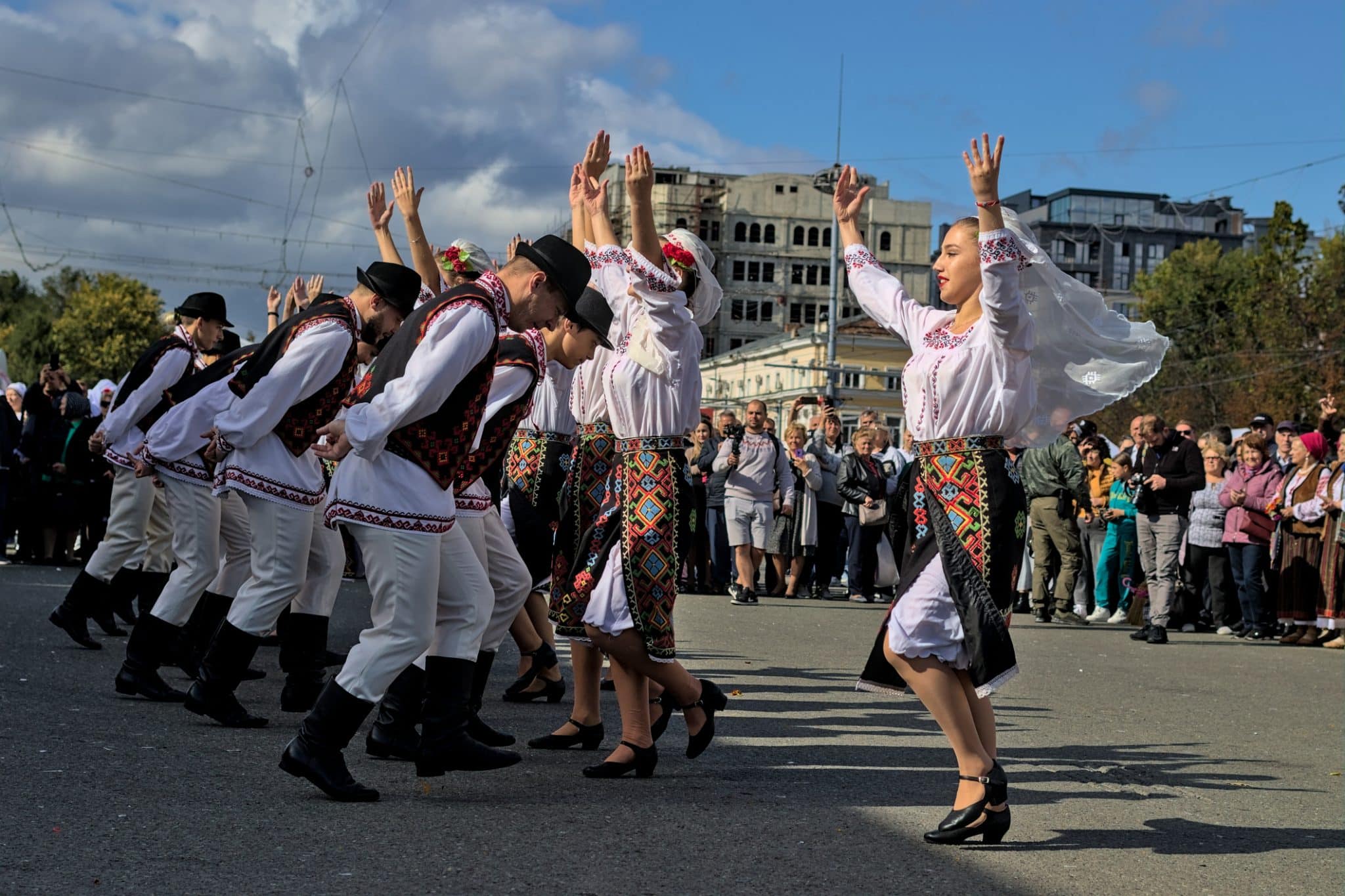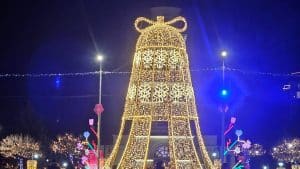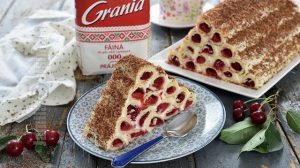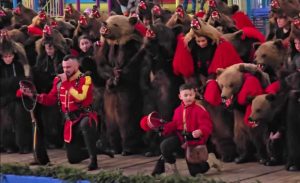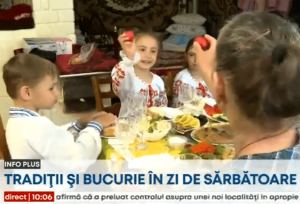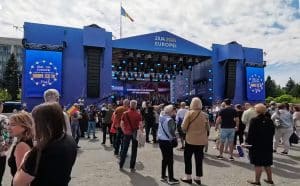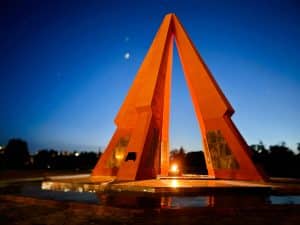Moldova is one of Europe’s most religious cultures, with about 95% of the population identifying with some form of Eastern Orthodoxy. Its holiday calendar is dominated by religious observances and even civic holidays are often marked with religious overtones, with speeches and services given by church officials.
Moldova remains a largely conservative and majority-rural society, which has helped preserve older traditions, even in cities. Urban celebrations tend to be more subdued with less elaborate costuming than rural practices, but similar customs that have faded in many urban Western societies have proven surprisingly persistent in Moldova.
Several national holidays commemorate independence and honor victims of Soviet repression. Many holidays also remind Moldovans of their Romanian heritage. While under occupation, the Soviets tried to foster a separate Moldovan identity. Today, this is increasingly rejected in favor of reclaiming the culture as Romanian.
Days Off
Long Weekends and Extra Days Off by Semester for 2025
| Spring | Summer | Fall | Winter |
| March 8 April 20-21, 28 May 1, 9 |
June 1 August 27, 31 |
October 14 | December 25, 31 January 1, 7-8 |
New Year’s
In Romanian: Revelionul (also known as ‘Anul Nou’)
December 31, 2024 – January 1, 2024
(days off: December 31 – January 1)
In Moldova, New Year holds the spotlight as the most eagerly anticipated holiday of the year. On the night of December 31st, Moldovans throw a true celebration with fireworks, concerts, tons of traditional food, and a televised New Year greeting delivered by the Moldovan president.
Restaurants, clubs, and public squares offer abundant opportunities to celebrate. A free concert and fireworks show is held on the Great National Assembly Square, the main square of the capital, Chișinău, and a symbol for the country.
However, the great majority of Moldovans celebrate at home with family and friends. Homes are decorated with New Year trees, lights, candles, and ribbons. In some families, children prepare their wish lists for Moș Crăciun (Santa; literally “Forefather Christmas”) and eagerly await his appearance at midnight. For others, Moș Crăciun will arrive the next week, for Orthodox Christmas.
Tables are richly laid with traditional foods, as Moldovans believe this bounty ensures good fortune in the coming year. Often included in this feast are sarmale (stuffed cabbage rolls), plăcinte (baked or fried pies with fillings such as potatoes, cottage cheese, cabbage or sour cherries), piftie (meat jelly), șubă (a layered salad with herring), olivier (Russian salad), and Cușma lui Guguță (crepes rolled with sour cherries and cream with chocolate grated on top). Many of these dishes are shared in common with Russia, a legacy of their shared time within the USSR. Also shared is the tradition of watching the Russian film classic The Irony of Fate every year (broadcast with the original Russian voicing).
At the same time, many old, local traditions are kept alive in Moldova. Plugușorul (the little plow), probably the most famous of these, is rooted in agricultural symbolism. On New Year’s Eve, children and teenagers go from house to house in villages and towns – and even apartment to apartment in cities – singing their wishes of good luck, prosperity, and fortune to their neighbors for the coming year. These songs are usually traditional urături (rhythmic, poetic chants) accompanied by cracking whips and jingling bells. All this noise is believed to drive away any bad spirits that may be lingering and leave the area clean as the New Year arrives. Verses for the chants can differ, but the following lines are very old and are recognized by nearly everyone:
| Aho! Aho! Copii și frați, Stați un pic și nu mânați, Lângă boi v-alăturați, Și cuvântul mi-ascultați!” […] Iarna-i grea, omătu-i mare, Semne bune anul are, Semne bune de belșug, Pentru brazda de sub plug. |
Aho! Aho! Children and brothers, Stop for a moment and don’t drive on, Come closer to the oxen, And listen to my words! […] The winter is harsh, the snow is deep, But the year shows good signs, Good signs of abundance, For the furrow beneath the plow. |
Many superstitions also come with the arrival of the New Year. Moldovans make sure to pay off any debts and keep some money in their pockets when the clock strikes midnight, hoping it will bring wealth in the coming year. Houses are thoroughly cleaned to start the year fresh and purified, and, according to tradition, wearing red underwear is a must if you wish to have love and money in the upcoming year.
Orthodox Christmas
In Romanian: Crăciunul (also known as ‘Crăciunul pe stil vechi’)
January 7, 2025
(day off: January 7)
Orthodox Christmas, just seven days after New Year, is Moldova’s most important religious holiday. Celebrations start on Christmas Eve (January 6th), when children go door to door in a tradition known as colindat (caroling) or “a merge cu steau” (literally, “to go with the star”). Children sing traditional colinde (Christmas carols) while carrying a crafted star with an icon in the center. This is meant to symbolize the star that appeared in the sky when Christ was born and their carols announce his birth. In villages, a priest will sometimes lead the children, carrying an icon of the Nativity, blessing each household.

Food also plays an important role. The Orthodox faithful will fast for 40 days before Christmas, avoiding meats and fats. On Christmas Eve, a special vegetarian or lean dinner with 12 dishes, symbolizing the twelve apostles, is served as the last meal of the fast.
To prepare for the meat-ladden Christmas Day dinner, a well-known tradition refers to the custom of slaughtering a pig the day before. A Divine Liturgy is held on Christmas morning before families head home to family gatherings. Dinner will include many dishes in common with New Year as well as many pork dishes such as perhaps roasts, sausages, and bacon.
Also traditional is a pastry called crăciunel, shaped like an unfinished figure eight. These are eaten on the day and also placed next to the household icons and are kept until Saint Gregory’s Day (April 23rd), symbolizing the continuity of the sacred season. There is also cozonac, or “Christmas bread,” a yeasted sweet bread kneaded with swirling layers of cocoa powder and nuts inside.
Children may receive visits from Moș Crăciun (Santa Klaus), if he’s not already come for New Year.
Saint Basil’s Day (Old Style New Year’s Day)
In Romanian: Sfântul Vasile (also known as ‘Anul Nou pe stil vechi’)
January 14, 2025
(Not a day off)
Saint Basil’s Day, more commonly known in Moldova as “Old Style New Year’s Day,” marks the beginning of the new year according to the Julian calendar. Most of the customs mirror those of the Gregorian New Year’s (New Style New Year’s Day). At the same time, it is the name day for people named Vasile and its variants (such as Vasilică, Vasea, Sile, Sică for men, and Vasilița, Vasilisa, Vasilica for women). “Vasile” itself is the Romanian-language version of “Basil.”
Two folkloric traditions are also uniquely associated with the old style celebration. On the night of the 13th of January, people dressed in traditional costumes and animal masks–primarily goats and bears–go from house to house wishing everyone a prosperous and fortunate year ahead. The masked participants perform dances, while the others accompany them, playing drums and flutes or reciting traditional urături. The goat mask is usually carved from wood and decorated with flowers, ribbons, and traditional motifs; the bear mask is worn like a full-body costume. These animal dances are rooted in pagan traditions that celebrate fertility, protection, and the cycle of life. The ritual continues throughout the entire night, often until every house in the community has been visited.
At dawn, a second custom begins: semănatul (the sowing ritual). Children and adults carry grains such as wheat, rice, buckwheat, corn, or sunflower seeds in their pockets and will, again, visit every house in the community. They will enter the homes and throw grains toward the hosts while reciting blessings. The most well-known chant wishes for abundance and strength in the coming year:
| “Să trăiți, să înfloriți, Ca merii, ca perii, În mijlocul primăverii, Să fiți tari ca piatra, Iuți ca săgeata, La anul și la mulți ani!” |
May you live and flourish Like apples trees and pear trees In the heart of spring, May you be as strong as stone, Swift as an arrow, Happy New Year and many more to come! |
Dragobete
In Romanian: Dragobete
February 24, 2025
(Not a day off)
While most of the world celebrates love on Saint Valentine’s Day, Romanian culture has the ancient holiday of Dragobete. Dragobete is a mythical figure (half-angel, half-human) from Romanian mythology who represents love and cheerfulness. He is often associated with the Greek Eros or the Roman Cupid. Yet, unlike his counterparts, Dragobete does not intervene in affairs, rather he exists to remind people to never stop celebrating love.
Traditionally, young people gathered in forests, where they would celebrate love and the arrival of spring. They would pick spring flowers, sing, dance, and perhaps even share a kiss, which symbolized pure and long lasting love. In some regions, young women would wash their faces with spring snow, which was believed to have magical properties on this day, to enhance their beauty and purify their skin.
Although such traditions have faded, young people still use the occasion of Dragobete as an opportunity to express their feelings to those they love and care about. Hence, the holiday is more than just the material goods like flowers, hearts, and chocolates typically given for this day. The essence of Dragobete is showing love through presence, care and attention, staying true to the spirit of the myth.
Here is a song about Dragobete, by a popular Moldovan band Zdob și Zdub in collaboration with a popular Moldovan singer Irina Rimes.
Mărțișor
In Romanian: Ziua Mărțișorului
March 1, 2025
(Not a day off)
On the 1st of March, Moldova celebrates the arrival of spring with the tradition of Mărțișor. Everyone wears and shares with one another mărțișoare, small decorative tassels made of intertwined red and white strings, symbolizing life, health, and rebirth.
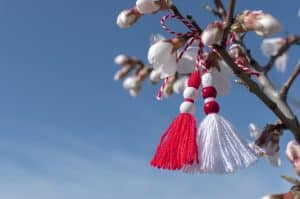
There are a few legends that explain this old and beautiful tradition. One tells of a battle between Lady Spring and the Winter Witch, who refused to give up her place. Lady Spring was wounded, her blood fell on the snow, which melted and gave way to snowdrop flowers. Spring had won. Another story says the Sun once came to Earth as a young man to celebrate with the people, but a dragon captured him. Without the Sun, life and joy faded. A brave youth set out on a long journey to free the sun. He eventually defeated the beast, but died from his wounds. Where his blood fell, snowdrop flowers appeared. Since then, people braid two tassels: a white one symbolizing the snowdrop flower’s purity and renewal, and the red to honor the hero’s sacrifice.
The mărțișor is worn as a brooch or lapel pin and is kept on until the first blooming tree is spotted. Then, it can be removed and tied to that tree to bring good fortune and prosperity. Alongside mărțișor, people give each other flowers, such as snowdrops and hyacinths, which are seen as the first signs of spring. Other emblematic spring flowers, like tulips and daffodils are also commonly given.
Mărțișor evolved from the Romanian word for March (Martie), and is one of the oldest surviving Romanian traditions. Today, it is celebrated as a 10-day festival of art, with a special emphasis on folk art, that takes place at museums, concert halls, fashion shows, and elsewhere throughout the country. Contests are often held, for example, for the most unique mărțișor design or most eco-friendly. Charities create and sell handmade mărțișoare to raise funds. Generally, the holiday is about warmth, new beginnings and care, with the red and white colours remaining a constant symbolic image.
Day of Remembrance and Gratitude
(Commemoration of the Victims of the War in Transdnestria)
In Romanian: Ziua memoriei și recunoștinței (also known as ‘Comemorarea victimelor războiului din Transnistria’)
March 2, 2025
(Not a day off)
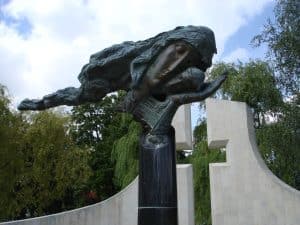
On the 2nd of March, Moldova observes the Day of Remembrance and Gratitude, commemorating the victims of the Transdnestrian War. State officials, the army, and citizens lay flowers and hold moments of silence at memorials dedicated to those who lost their lives in the conflict.
The main phase of the war began on the 2nd of March, 1992, on the same day that Moldova was officially recognized as a member of the United Nations. Although tensions had existed since 1990, a full-blown military conflict began only in 1992, pitting Moldova’s military against Transdnestrian paramilitary groups supported directly by Russian troops. Four months later, around 1000 were left dead and more than 100,000 displaced. The war ended on the 21st of July, 1992, when Moldova and the Russian Federation signed a ceasefire. However, a treaty was never signed. The 14th Russian Army is still stationed in Transdnestria, and the conflict remains “frozen” to this day.
International Women’s Day
In Romanian: Ziua Internațională a Femeii (also called ‘Mother’s Day’)
March 8, 2025
(day off: March 8)
International Women’s Day is a former Soviet holiday that has survived in many former Soviet states, including Moldova, where it is enthusiastically celebrated. It’s the perfect occasion to express love and gratitude to all the women in one’s life.
The tulip, often in full bloom at this time of the year, has become the symbol of the holiday. It is commonly gifted with chocolates, mărțișoare (see Mărțișor Day) or any other tokens of affection. The day itself is an official holiday, giving everyone, but especially women, a day off to relax and feel cherished. In the evening there are public concerts which usually offer free entrance.
Also as in many former Soviet countries, the day is also used to bring attention to women’s rights. An annual feminist march is held in central Chisinau, for instance, focusing on specific issues.
Remembrance Day for Famine Victims
In Romanian: Comemorarea victimelor foametei
April 19, 2025
(Not a day off)
On the third Saturday of April, Moldova commemorates the victims of the organized famine of 1946-1947. State officials and civilians gather to lay flowers at the memorials dedicated to the victims.
Official Moldovan estimate that, between December 1946 and August 1947, more than 123,000 people died of starvation (about 5% of the population), and over 400,000 suffered from severe malnutrition, with many dying in the years that followed due to its effects.
Drought and post-war agricultural collapse contributed to the crisis, but the primary cause stemmed from Soviet policies, which proceeded with forced collectivization at a sensitive time while raising food prices and maintaining high quotas for agricultural requisitioning. Although many areas of the USSR were affected, Moldova in particular suffered at this time, with nearly every family touched by tragedy.
The famine remains one of the darkest chapters in Moldova’s history. A well-known documentation of its events is the “Cartea foametei” (The Book of Hunger) by Larisa Turea, which compiles testimonies of survivors or second generation survivors and over 200 pages of official state records from the National Archive. The book also inspired a theatrical adaptation by the Luceafărul Theatre.
Easter and Second Day of Easter
In Romanian: Paștele
April 20, 21, 2025
(days off: April 20,21)
Orthodox Easter is celebrated with the same importance and reverence as Christmas. In preparation, people dye eggs – most commonly red, as red symbolizes the blood of Jesus according to Christian tradition. Red onion peels are most common for use in dying the eggs. Many people also bake cozonac and pască, traditional Easter cakes. The former is sweet, often filled with chocolate, raisins, nuts and/or rum and vanilla essence. The latter is savory, made with cottage cheese and marked with a cross on top.
On the day before Easter, many Moldovans, along with much of Christian world, closely follow the news for the moment the Holy Fire is lit in Jerusalem. This fire represents Jesus’s resurrection and is a sign for another blessed year. The fire is distributed to churches around the globe, including in Moldova. That night, Easter service is held and attended by the faithful in their best clothes, often new, to symbolize renewal and rebirth and reflecting the belief that Jesus rose in new, white garments. Each person brings a candle and carefully protects its flame to carry the Holy Light home. The service lasts the whole night and it ends with the blessing of Easter foods, which the people bring in baskets to the church. These baskets typically include dyed eggs, pască, cozonac, wine, and sweets. These will be eaten the next day as a simple breakfast that literally breaks the Easter fast that began 40 days before.
On Easter morning, a unique ritual takes place. People wash their faces with a red egg, a white egg, and a coin. Each has a symbolic meaning: the red egg represents health, the white egg purity, and the coin wealth. It’s believed that this act brings blessings in the year ahead.
Before eating, families engage in a friendly egg fight. Each person selects a dyed egg and taps it against someone else’s to see whose egg remains uncracked. The game is initiated by the oldest person, continuing down to the youngest. The winner is said to enjoy good luck for the rest of the year. During this tradition, participants greet each other with Hristos a înviat! (Christ has risen!), to which the response is Adevărat a înviat! (Indeed, He has risen!). These phrases traditionally replace the regular greetings for the next 40 days, although most people return to everyday greetings sooner.
Easter dinner is usually a large family affair and often involves a substantial spread of lamb (traditional as it represents Christ), and a number of Moldovan dishes such as filled pastries, sarmale (rice and meat cooked in grape leaves), and mămăligă (cornbread).
Ultimately, Easter is a time for family, love and gratitude, as is the Second Day of Easter, when Moldovans visit their relatives and friends, sharing the blessing of Jesus’s resurrection with the greeting Hristos a înviat!
Memorial Easter
In Romanian: Paștele Blajinilor
April 28, 2025
(day off: April 28)
One week after Easter Sunday, Moldovans mark Memorial Easter, a day dedicated to remembering and honoring the dead. In the days leading up to it, families visit the cemetery to clean and tidy the graves of their departed ones.
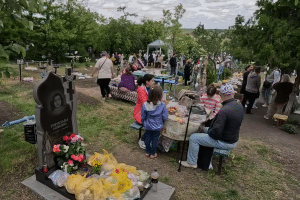
Memorial Easter was originally celebrated on a Monday. Under communism, the authorities effectively banned the holiday by making people work on this day. Therefore, observation of the important holiday moved quietly to Sunday. Today, this is a public holiday in Moldova, and enthusiastically celebrated on Monday again.
On Memorial Easter, people go to the cemetery with baskets of food similar to those that they took to the church to be blessed for Easter. In addition to the food, small gifts such as tableware or clothing are included. These are given away as alms (charitable offerings) for the souls of the dead.
Children also take part in the tradition. They walk around the cemetery, stopping at graves and greeting people with Hristos a înviat!. In return, they are given sweets or money. The ceremony concludes when the priest visits the graves to perform a blessing. Afterwards, families gather at home for a commemorative meal, sharing stories and honoring the memory and lives of those they have lost.
The name in Romanian: “Paștele Blajinilor” loosely translates as “Easter of the Gentle” or “Easter of the Good (Ones)” but is usually rendered as “Memorial Easter” in English. It is also sometimes called in Romanian “Easter of the Good Shepherd,” “Easter of the Blessed,” and “Easter of the Dead.” The holiday predates Christianity and was once common in many Eurasian cultures. Today, it survives most vibrantly in Moldova and Georgia.
Labor Day
In Romanian: Ziua Muncii
May 1, 2025
(day off: May 1)
During the Soviet era, Labor Day was celebrated with large, state-organized parades and official meetings. Today, the Socialist Party of Moldova partially continues that tradition by holding a public gathering in the capital. In addition, the trade unions and public sector workers use the occasion to hold demonstrations advocating for better working conditions.
For most Moldovans, however, Labor Day is just about enjoying some time off. The day is usually marked by picnics, barbecues, and outdoor gatherings as people take advantage of warming weather to relax and spend the day with family and friends.
Europe Day & Victory Day
In Romanian: Ziua Europei / Ziua Victoriei
May 9, 2025
(day off: May 9)
The 9th of May is a complex holiday in Moldova, as it is officially recognized both as Victory Day and Europe Day. For many Moldovans, especially the older generation, Victory Day marks the defeat of Nazi Germany at the end of World Word II. On this day, people honor the memory of those who died during the war, including more than a quarter million Moldovans.
In the morning, wreaths and flowers are laid and military ceremonies are held at monuments and memorials, such as the Eternity Flame Complex in Chișinău. Veterans are invited and honored for their patriotism. The gatherings usually include speeches from public officials, including the president, as well as patriotic music and moments of silence. The Saint George’s ribbon was, until recently, a common symbol of the holiday. The orange and black stripes were part of awards given for military valor by the USSR. However, since 2022, the ribbon has become associated with Russia’s war effort in Ukraine and has been banned in Moldova. People risk fines for wearing it.
In the afternoon, the day transitions to Europe Day, highlighting Moldova’s aspiration toward integrating into Europe’s political structure and values. May 9th commemorates the issuance of the Schuman Declaration of 1950, which is considered the foundation of the modern European Union. Local NGOs and the European Union Delegation in Moldova organize public events around the country. In Chișinău, they host “The European City,” an open-air fair featuring cultural and educational stands from various EU countries. Quizzes and contests about EU history and contemporary affairs are also organized.
The day usually concludes with fireworks. There is also a free concert at the Great National Assembly Square in Chișinău.
International Children’s Day
In Romanian: Ziua Internațională a copilului
June 1, 2025
(day off: June 1)
This holiday focuses on children’s rights and well-being. It has been a public holiday since 2023, allowing parents to celebrate with their children. Across the country, activities are organized for children, including free concerts, street performances, and the distribution of balloons and small gifts.
Government institutions also host special events, often at the government or other official venues. In 2025, the Presidential Residency in Codrița hosted a large event featuring nature walks, cartoon screenings, painting workshops, and many other activities.
Remembrance Day for the Victims of Stalinist Deportations
In Romanian: Comemorarea victimelor deportărilor staliniste
July 6, 2025
(Not a day off)
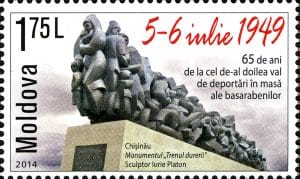
This commemoration remembers the victims of the mass deportations that took place on the night of the 5th and 6th of July 1949 – the largest deportation wave in the region’s history. Tens of thousands were sent to forced labor camps in Siberia and Kazakhstan and their property was confiscated by the state. Most made the days-long trip packed into cattle cars. Between 1941 and 1951, there were three waves of deportations. Official estimates put the total number of deportees at between 80 and 120 thousand.
On this day, state officials and the public gather to lay flowers at memorials built to the victims and hold a moment of silence. Flags fly at half mast. Museums host exhibitions on the deportations, classrooms host special lessons, academic conferences are held, and the Mihai Eminescu National Theater stages its long-running play, The Siberian Files, based on the deportations. In the Great National Assembly Square in Chișinău, two train cars similar to those used in the deportations are put on display. Although the day itself falls on July 6th, exhibitions often last through most of July.
Independence Day
In Romanian: Ziua Independenței
August 27, 2025
(day off: August 27)
Moldova proudly celebrates the day it issued its Declaration of Independence from the Soviet Union in 1991. The document ended over 50 years of Soviet occupation which had begun when the USSR annexed Bessarabia from Romania early in WWII. It later renamed the area Moldova. This occupation, in turn, had been preceded by a century of Russian imperial rule, interrupted by only two decades of union with Romania (1918-1940). Moldova’s pathway to independence was also paved by the reestablishment of Romanian as the official language in 1989 and the Declaration of Sovereignty in 1990.
In Moldova, Independence Day is marked with public gatherings and patriotic demonstrations. Veterans of World War II and the 1992 Transdnestrian War are honored for their service and contribution to the country’s security.
The Moldovan flag is displayed throughout the country. In the capital, Chișinău, the main celebrations begin in the morning with a solemn ceremony at the monument of Stephen the Great, the ruler who presided over Moldova’s 15th century golden age. State officials and citizens lay flowers to pay tribute to his legacy of building a strong, independent Moldova. Events then shift to Chișinău’s Great National Assembly Square where an open-air fair showcasing local crafts, traditional food, and handmade products is held. The evening offers a large, free music concert with performances by both national and international artists, culminating in a fireworks display. Similar, smaller celebrations are held throughout Moldova on this day.
The Day of the Romanian Language
In Romanian: Ziua Limbii Române
August 31, 2025
(day off: August 31)
The Day of the Romanian Language marks one of the most significant achievements of Moldova’s National Liberation Movement of the 1980s. On August 27, 1989, over 750,000 people – nearly a sixth of Moldova’s population at the time – gathered in Chișinău for a historic Great National Assembly to demand that Romanian be recognized as the official language of the Moldovan SSR.
Just three days later, Romanian was reinstated as the state language, and the Latin alphabet was reintroduced after 50 years of Soviet-imposed Cyrillic script.
The holiday was officially established in 2013. Today, Moldovans and Romanians worldwide celebrate with cultural events, poetry recitals, and concerts. Many lay flowers at monuments, especially the statue of Stephen the Great, and at statues of Mihai Eminescu, Romania’s most revered poet.
One emerging tradition is the Great National Dictation, held in Chișinău. In 2023, more than 2,000 people took part, writing down a spoken Romanian text, with prizes awarded to those with the fewest spelling, grammar, and punctuation errors. In 2024, the event expanded to 15 district centers, welcoming participants from across the country. It is organized by Moldova’s Ministry of Education.
Concerts are also central to the celebration, often held under the banner “Limba noastră – Limbă sfântă” (“Our Language – A Sacred Language”), a reference to Moldova’s national anthem Limba Noastră and another indication at how important language and culture are to Moldovans.
National Wine Day
In Romanian: Ziua Vinului
October 4-5, 2025
(Not a day off)
On the first weekend of October, Moldova holds National Wine Day, which, yes, is technically a weekend. But who’s counting when you have so much good wine, right?
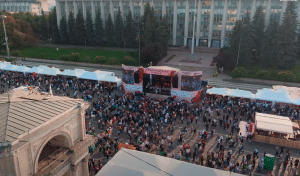
Wine is Moldova’s great national pride and arguably the country’s most recognized export. Moldova is home to the largest underground wine cellar in the world – holding over 1.5 million bottles including wines belonging to world politicians, such as John Kerry, Angela Merkel, and Emanuel Macron.
National Wine Day was first declared a national event in 2002, as an effort to promote wine and wine tourism in Moldova. The main event is a two day open-air festival in the capital with over 90 Moldovan wineries participating, offering wine tastings and showcasing their medals from international wine competitions.
Events are heavily marketed to both locals and foreign tourists. There are masterclasses led by sommeliers, alongside discussions with wine producers. There is plenty of Moldovan food on offer and a free concert of folk music. Events for industry professionals and international retailers are also now held.
Various state-promoted tourist packages have also become standard offerings for National Wine Day – which include time in the capital for the fair before proceeding to several more days (who’s counting, right?) touring Moldova, visiting tourist and historical sites as well as wineries and vineyards.
Chișinău’s Day
In Romanian: Ziua Chișinăului
October 14, 2025
(day off: October 14)
Chișinău’s Day is a local public holiday dedicated to the capital. It was once part of a USSR-wide system of “city holidays” that celebrated specific cities, usually on a weekend and usually on a date significant to its founding. Chișinău’s Day was then celebrated on the first Sunday of October.
In 2002, the holiday was moved to October 14 and has been observed on this day ever since. The new date was chosen to correspond roughly with the date that The Nativity Cathedral, the main cathedral of the Moldovan Orthodox Church, was dedicated (October 15, 1836) and to correspond with The Intercession of the Virgin Mary, a major Orthodox holiday dedicated to the patron saint of the city’s oldest church, the Mazarache Church, built in 1752.
Most cities, towns and villages in Moldova have such a celebration with each celebrating the anniversary of the foundation of a church or parish and usually dedicated to a patron saint.
Chișinău’s Day is, of course, the county’s largest such celebration. At the same time, it is typical. The city’s main thoroughfare, Ștefan cel Mare Boulevard, is closed to traffic and converted into an open-air festival site. Folk music and dance abound, handmade artisan items are sold, traditional food and Moldovan wine are on offer, and more. Fireworks top off the evening, often with more music on a central square.
Saint Andrew’s Day
In Romanian: Ziua Sfântului Andrei
November 30, 2025
(day off: November 30)
Saint Andrew, one of the original 12 apostles, is credited with bringing Christianity to the Romanians. He is regarded as a protector of the people and his saint’s day is considered particularly powerful and important. The holiday, as a saint’s day, is also the name day for everyone named Andrei (a common name in Moldova) and its variations (such as Andi, Andu, Andreea, Andra, Andrada etc.).
All profoundly religious, many of the traditions and beliefs surrounding the day are actually pre-Christian and center on fertility, protection, and divination. The surrounding myths vary, telling of Saint Andrew’s Eve as a time when unclean spirits, the undead, and even werewolves roamed the night. St. Andrew on this night simultaneously protects wolves and protects humans from wolves. The eve coincides with the last day of fall, leading into the cold winter months, a time associated with death.
Although Saint Andrew serves as a protector on this night, people also believed that they must take precautions as well. Sharp objects must not be left out and people place garlic at windows and doors and hang basil over the entrance of their houses for protection from the spirits and monsters.
Despite the danger, the night is also one for making light mischief. For instance, gates and even front doors of homes of unmarried girls might be stolen and hidden, making the family search for them the next day. It’s also a night for divination. Girls who wish to get married might place basil under their pillows at night, hoping to dream of their future partner. Another custom involved standing naked between two mirrors while holding two lit candles. It is believed that the image of their spouse will be reflected in the mirror.
Christmas (New Style)
In Romanian: Crăciunul (also known as ‘Crăciunul pe stil nou’)
December 25, 2025
(day off: December 25)
While both Old Style and New Style Christmas share the same traditions and cheerful atmosphere, the Orthodox Christmas remains closely associated with the religious and folkloric traditions, while the Christmas on the 25th of December has taken on a more modern, Western-influenced character.
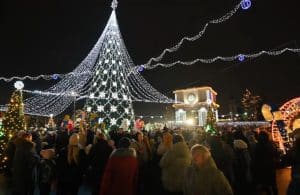
In major cities like Chișinău and Bălți, lively Christmas markets are organized with stalls, decorations, and gifts. Nearby are a wide range of activities, including ice-skating, Santa’s House, holiday-themed workshops, and concerts. Whole cities are decorated with Christmas lights and decorations and popular western Christmas music fills the air. The “Secret Santa” anonymous gift exchanges have gained traction. Naturally, Moș Crăciun plays a central role in the festivities, bringing joy to children by leaving gifts under the Christmas tree on Christmas Eve – although, again, he will typically only come to a household once – but families will decide which day he shows up.
New Style Christmas has caught on in part because many Moldovans (between 25% and 33% of the population) live and work abroad in Europe, where Christmas is celebrated on the 25th. While they receive time off for Western Christmas and usually return home at that time, their vacation usually does not extend to Orthodox Christmas on January 7th. However, Christmas is very important to Moldovans. Hence, many have adopted New Style Christmas as a practical work around, allowing families to celebrate before they must split up again. Even the churches have begun to offer services on this date, so that families can still have the Divine Liturgy together for the holidays as well.
Regardless of the date, the spirit of Christmas in Moldova remains a time for love, family, and holiday cheer.
You’ll Also Love
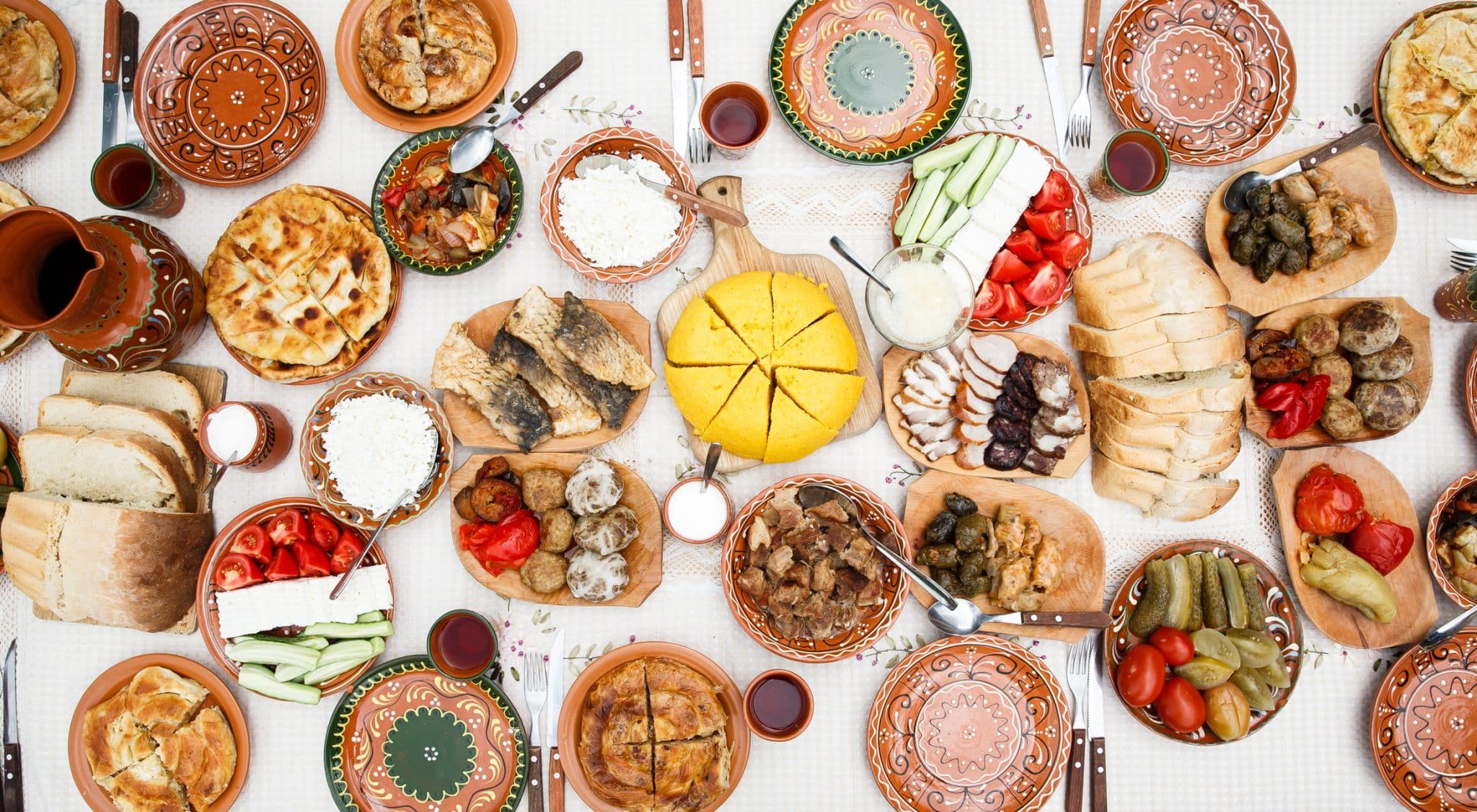
The Moldovan Food Dictionary
Moldovan cooking developed over centuries in the fertile lands between the Prut and Dniester rivers, where a temperate climate, rich soils, and rolling farmland supported abundant agriculture. Early inhabitants, including Thracians and Dacians, cultivated wheat, barley, and grapes, while herding sheep and cattle for dairy and meat. Roman rule expanded viticulture, but bread, dairy, and […]

The Talking Romanian (in Moldova) Phrasebook
The Talking Phrasebook Series presents useful phrases and words in side-by-side translation and with audio files specifically geared to help students work on listening skills and pronunciation. Below, you will find several useful phrases and words. To the left is the English and to the far right is the Romanian translation. In the center column […]

